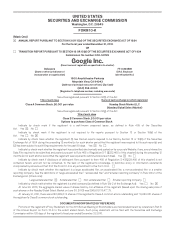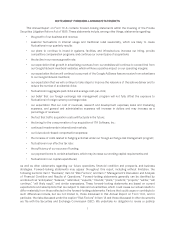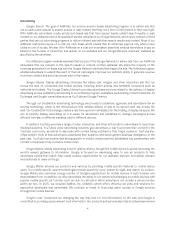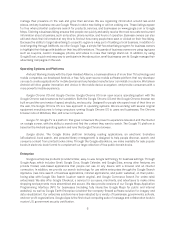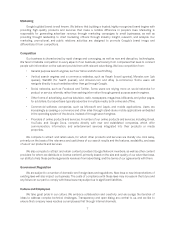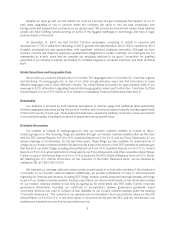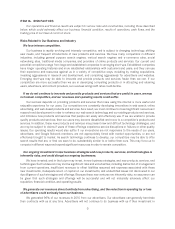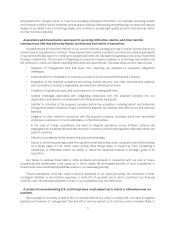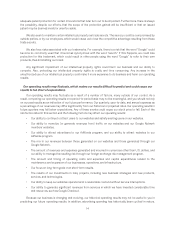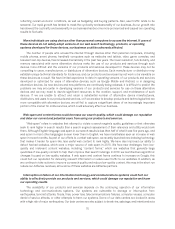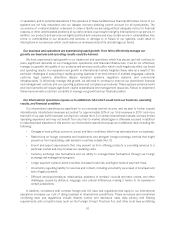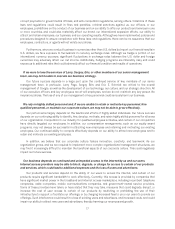Google 2010 Annual Report Download - page 20
Download and view the complete annual report
Please find page 20 of the 2010 Google annual report below. You can navigate through the pages in the report by either clicking on the pages listed below, or by using the keyword search tool below to find specific information within the annual report.Marketing
Google’s global brand is well known. We believe that building a trusted, highly-recognized brand begins with
providing high-quality products and services that make a notable difference in people’s lives. Marketing is
responsible for generating advertiser revenue through marketing campaigns to small businesses, as well as
providing thought leadership to chief marketing officers through industry insight, research, and analysis. Our
marketing, promotional, and public relations activities are designed to promote Google’s brand image and
differentiate it from competitors.
Competition
Our business is characterized by rapid change and converging, as well as new and disruptive, technologies.
We face formidable competition in every aspect of our business, particularly from companies that seek to connect
people with information on the web and provide them with relevant advertising. We face competition from:
• General purpose search engines, such as Yahoo and Microsoft’s Bing.
• Vertical search engines and e-commerce websites, such as Kayak (travel queries), Monster.com (job
queries), WebMD (for health queries), and Amazon.com and eBay (e-commerce). Some users will
navigate directly to such websites rather than go through Google.
• Social networks, such as Facebook and Twitter. Some users are relying more on social networks for
product or service referrals, rather than seeking information through general purpose search engines.
• Other forms of advertising, such as television, radio, newspapers, magazines, billboards, and yellow pages,
for ad dollars. Our advertisers typically advertise in multiple media, both online and offline.
• Commercial software companies, such as Microsoft and Apple, and mobile applications. Users are
increasingly accessing e-commerce and other sites through stand-alone mobile applications embedded
in the operating system of the device, instead of through search engines.
• Providers of online products and services. A number of our online products and services, including Gmail,
YouTube, and Google Docs, compete directly with new and established companies, which offer
communication, information, and entertainment services integrated into their products or media
properties.
We compete to attract and retain users, for whom other products and services are literally one click away,
primarily on the basis of the relevance and usefulness of our search results and the features, availability, and ease
of use of our products and services.
We also compete to attract and retain content providers (Google Network members, as well as other content
providers for whom we distribute or license content), primarily based on the size and quality of our advertiser base,
our ability to help these partners generate revenues from advertising, and the terms of our agreements with them.
Government Regulation
We are subject to a number of domestic and foreign laws and regulations. New laws or new interpretations of
existing laws will also impact our business. The costs of compliance with these laws may increase in the future and
any failure on our part to comply with these laws may subject us to significant liabilities.
Culture and Employees
We take great pride in our culture. We embrace collaboration and creativity, and encourage the iteration of
ideas to address complex technical challenges. Transparency and open dialog are central to us, and we like to
ensure that company news reaches our employees first through internal channels.
7



